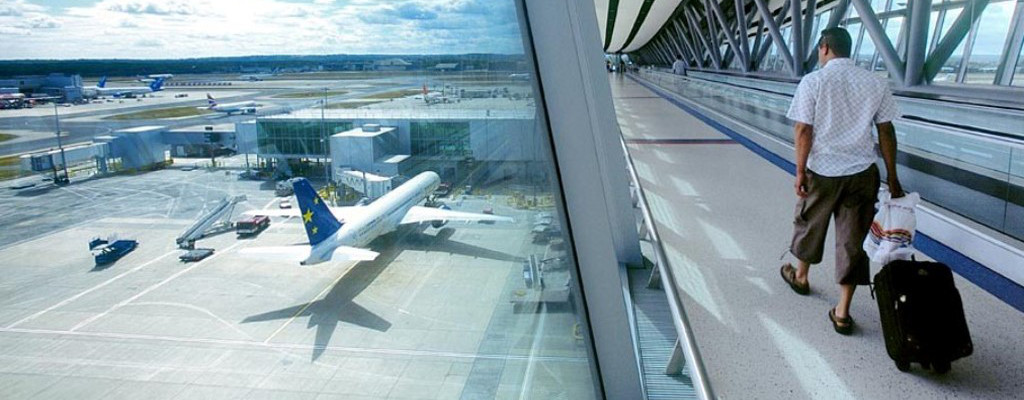
Case Studies

Gatwick Airport
Developing the “most advanced Automated PA in any airport in the world”
Gatwick’s Operations Manager
CLIENT PROFILE
Gatwick Airport (LGW). Also known as London Gatwick, is London’s second largest international airport and second busiest by total passenger traffic in the United Kingdom after Heathrow. Furthermore, Gatwick is Europe’s leading airport for point-to-point flights and has the world’s busiest single-use runway with up to 53 aircraft movements per hour in late-2012 and a maximum capacity of 55 movements per hour.[Its two terminals – North and South – cover an area of 98,000 m2 (1,050,000 sq ft) and 160,000 m2 (1,700,000 sq ft) respectively.
In 2013, 35.4 million passengers passed through Gatwick.
THE REQUIREMENT
Gatwick had recently updated the PA system in the South Terminal & had on older legacy system in the North Terminal. Gatwick needed to; improve customer service, present a uniform interface to both systems, de-skill it’s use, improve the audibility and reduce the number of staff required to operate the information desks whilst improving passenger experience.
The primary reason behind the implementation of additional functionality was customer service. The airport wanted to communicate more effectively with it overseas passengers. EasyJet the biggest operator at Gatwick, among other airlines flies to European destinations up to three times daily.
There were two reasons this would be improved using multi-lingual capabilities
(1) During business as usual operations to contact passengers
(2) To update passengers during times of disruption so that they are kept informed of an issue as it unfolds
Another aspect Gatwick were seeing unfold was the benefit of having more boots on the deck to see passengers face to face and help answer their questions rather than from behind a desk
To achieve the aims, Gatwick required the ‘most advanced text to speech system’ available on the market to make automated announcements from ‘mobile’ information assistants using simple interface on tablet terminals.
CONTRACT
Gatwick submitted the Tender Request to OJEU (Official Journal of the European Union) in January 2013.
The contract was split into two parts a ‘Pre-qualification’ and then a shortlist were invited to the main tender. Microwatt sailed through the first qualification stage, to a short list of three companies, one dropped out then leaving only two.
After two demonstrations of the proposed system, Microwatt won the tender.
Whilst competition was strong the major advantage Microwatt were successful in their tender was that Gatwick required the specific development of text to speech functionality from a mobile device. Whilst a field not yet developed Microwatt agreed to take all of the risk in developing and implementing this ground breaking technology.
Gatwick wished to put the servers on their own network, so installation took longer than normal, but the system went live in January 2014. By the end of 2014 Gatwick had gone over completely to the Phonetica (MIA as was) system.

Gatwick’s Pier 6 is linked by the world’s largest air passenger bridge to span a live taxiway, high enough for a Boeing 747 400 to pass underneath.
RETURN ON INVESTMENT
Following installation Gatwick were able to close all their fixed information desks and redevelop the space and provide valuable retail extensions to Marks & Spencer in South Terminal and further opportunities in North Terminal.
Whilst not the main driver, Gatwick were able to move to a mobile solution and a more flexible information pod rather than a fixed desk information provision. This allowed them to redeploy staff to have a more face to face interaction with passengers and ultimately, with the aid of mobile technology multi task. Eventually, it was forecast that with natural attrition this would decrease the number of staff required to carry out the role.
IMPROVED CUSTOMER SERVICE
The level of customer service has been improved overall. The ability to stay in touch with its multi lingual customer base has allowed Gatwick to communicate more effectively than ever before from information messages regarding multi faith worship to vital disruption messages.
Feedback from the staff is very positive and the system has been rolled out to facilitate the handling agents at Gatwick direct access to the system to perform their own announcements. This is of course monitored through the systems security functionality.
Feedback from passengers has also been positive, especially those from overseas from finding a family member who cannot speak English to hearing a valuable “Last call” in their own language thus avoiding missing a flight.
During disruption the Microwatt system has allowed Gatwick to stay on top of evolving events and make sure that its customers are kept informed at regular intervals (using the timed message functionality) in multi languages. This has worked particularly well when flights have been cancelled or delayed.
It is anticipated that Gatwick will further expand its use of the MIA system and use additional functionality in the gate rooms for an automated boarding experience.
